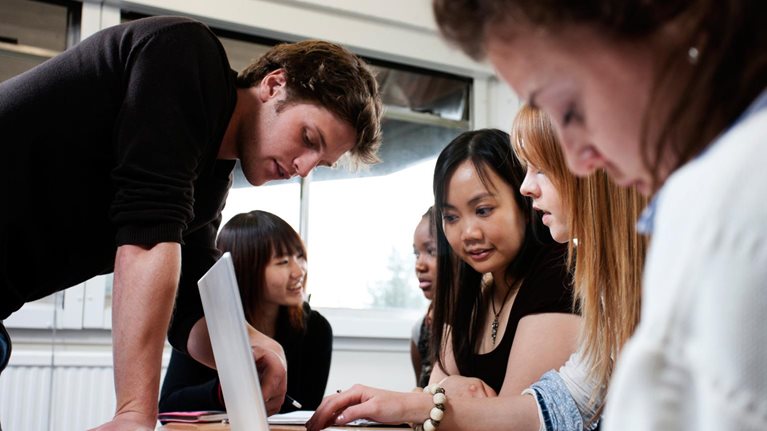As nonprofits and venture-backed firms roll out new technologies to augment traditional classroom instruction, a chorus of skeptics has stepped forward to question their value. Haven’t school districts spent millions on interactive whiteboards, TVs, and computers without any material boost in student achievement to show for it? Instead of fetishizing the latest technological fad (and enriching the companies behind it), wouldn’t districts be better off investing scarce dollars on more important things like hiring more teachers and renovating dilapidated facilities?
These are fair questions. But as a former classroom teacher who now consults with both school districts and leading companies, I believe this moment truly is different for technology in education, and for one simple reason. Thanks to digital technology, we’re within sight of being able to personalize learning so that each student gets exactly what he or she needs, which is what good teachers have strived for since the invention of chalk and blackboards. The real question ahead is not whether but how educational technology can empower our students and teachers. To answer this question, we’ll need to rethink classroom activities and teacher practice across the educational system.
When I taught middle-school science in a tough public school in Washington, DC, I typically spent four hours every night trying to differentiate my lessons for the next day. My goal was to meet each student where he or she was with engaging, targeted material. On days when I failed to meet this goal, whether due to lack of time or energy, it was clear that a good number of my 115-odd students would end up either bored or lost. When teachers must choose between pitching everything to the middle or burning out and leaving the profession, it’s our kids who lose.
Would you like to learn more about our Social Sector Practice?
Today’s technologies are poised to liberate teachers from this dilemma. I used to spend hours scouring Google to find appropriate reading materials for my lesson plans. “Adaptive reading” programs basically automate the activity on which I routinely burnt the midnight oil. These programs continually assess students’ understanding and make new assignments based on specific needs and progress. They can also draw on a vast range of reading materials that data has shown to be effective at engaging young people.
Technology-enabled lesson planning is just the beginning. All great teaching boils down to a four-step, cyclical process. The first step is understanding what students need to learn. The second step involves sharing this information in a manner that students can take in. The third step is practice, giving students the chance to engage in content and master their new skills. The fourth is feedback, so that mistakes can be corrected and students can progress.
Research shows that this process works. In an influential 1980s study, University of Chicago researcher Benjamin Bloom demonstrated that students who were given daily feedback and worked with a tutor who personalized every aspect of their instruction performed better than 98 percent of students taught in the traditional fashion.
This is what great teachers strive for—and what emerging technologies can help them attain. If I were teaching in a tech-enabled classroom today, I would see easy-to-interpret data that identified each of my students’ needs every day. I would share that data, allowing each student to see exactly how much of the curriculum he or she had mastered and what challenges still remained. The same software that produces these reports would suggest materials and activities tailored to individual needs.
In a properly wired classroom, my students would work through daily, individualized “playlists” that moved them from virtual lab experiments to individual, adaptive practice balancing chemical equations and then to small-group instruction with me. They would receive instant feedback on each of these activities, and the playlist would adjust to ensure that each student was always moving forward. Because my students would always be challenged but not out of their depth, learning would feel rewarding, and they would be champing at the bit to take on the next, just-attainable challenge.
There’s already evidence that helping teachers teach—and students learn—in this way can improve educational outcomes. In North Carolina, the Mooresville Graded School District saw competency scores climb to 90 percent from 60 percent in the five years after it embraced digitally enabled learning. At Arizona State University, an adaptive-learning program has improved pass rates for students in remedial math courses to 75 percent from 64 percent. Dropout rates of these students have declined by 7 percent.

Why US education is ready for investment
These improvements are a big deal. If we could use tech-enabled, personalized learning to achieve similar results for the entire student population, we could produce more than $300 billion in increased lifetime earnings of our youth every year, according to a recent estimate by the McKinsey Global Institute.
To be sure, these are early days. We still need great teachers in the classroom. The learning curve may be steep for teachers who have to master the technology and adapt their practice to optimize its benefits for their classrooms. In some ways, as with innovations in other fields, this will involve the proverbial challenge of “designing the airplane while flying it.” The rollout of these new approaches will almost certainly be uneven and imperfect at first. Just ask the courageous educators in the Los Angeles Unified School District, who are currently implementing an interactive, tablet-based curriculum designed to ensure that every student has access to 21st-century skills and technology.
But I urge educators to keep their eye on the prize, because this time is different. Technology can now amplify every aspect of great teaching, which is the key to raising student achievement. Technology can help students learn more and help teachers focus on human interaction with students, which is where they can add the most value. If we work together with open minds, this former teacher is convinced we can achieve extraordinary progress for our youth.


